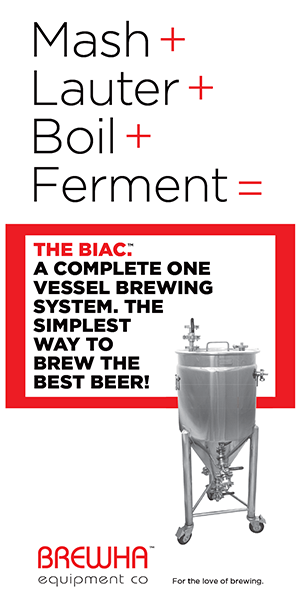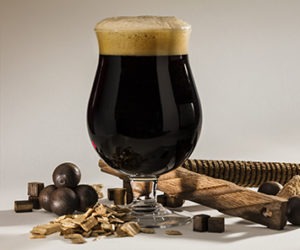Myth Busting
It was the best of times, it was the worst of times, it was the age of wisdom, it was the age of foolishness . . .
Charles Dickens may have thought he was describing the French Revolution, but his expression of a near universal sentiment equally captures the flood of homebrewing information available today. We have unprecedented access to brewing (and homebrewing) information and ingredients — a wonderful thing. Simultaneously, we have an overload of information (wait a minute, this sounds even more universal!). As anyone who has ever tried to hit every booth at Homebrew Con Club Night can tell you, it’s possible to have too much of a good thing!
Figuring out what we need to absorb is a problem in the relentless noise. Much of it isn’t applicable to what we do, is questionable, or is simply wrong. We’ve spent a lot of our brewing “career” trying to figure out what’s true, what isn’t, and most importantly, what matters to homebrewers. (We’re going to keep hammering this point — there’s a massive difference between what we do at home, what we can get away with, and what matters to us homebrewers compared to what a professional brewer needs to do to maximize quality, repeatability, and profits).
Myths come to us from all different directions. Humanity is awash in stories that we tell ourselves to explain and amuse.
The most common source is — well — other homebrewers. Brewing is, after all, a very “hands-on” craft with some teachers being taciturn, doling out drips and drabs of wisdom, and others garrulous to a fault, loosing torrents of facts and tales. The “facts” come from various sources, often half-remembered or missing some detail.
The second most common source appears to be homebrewing literature. Someone will write something they’ve learned in a new book. That makes it “fact,” and it gets repeated down the line. The repetition gives it even more credence: “Everybody knows that’s true! It was in a book!” Maybe the misinformation appears because someone misunderstands an underlying principle. Or they attribute a particular effect to the wrong cause. Or it could be because no one has ever tested the concept to determine its validity or applicability to homebrewers.
Some myths start with commercial brewers whose concerns and processes are quite different than those of most homebrewers. Others simply come down to a difference of opinion. And then there are myths that are directly contradicted by common brewing practices, but for some reason, people don’t connect them.
Here is our list of the top six myths and misunderstandings that are common in the homebrew world.
Sparge Temperature
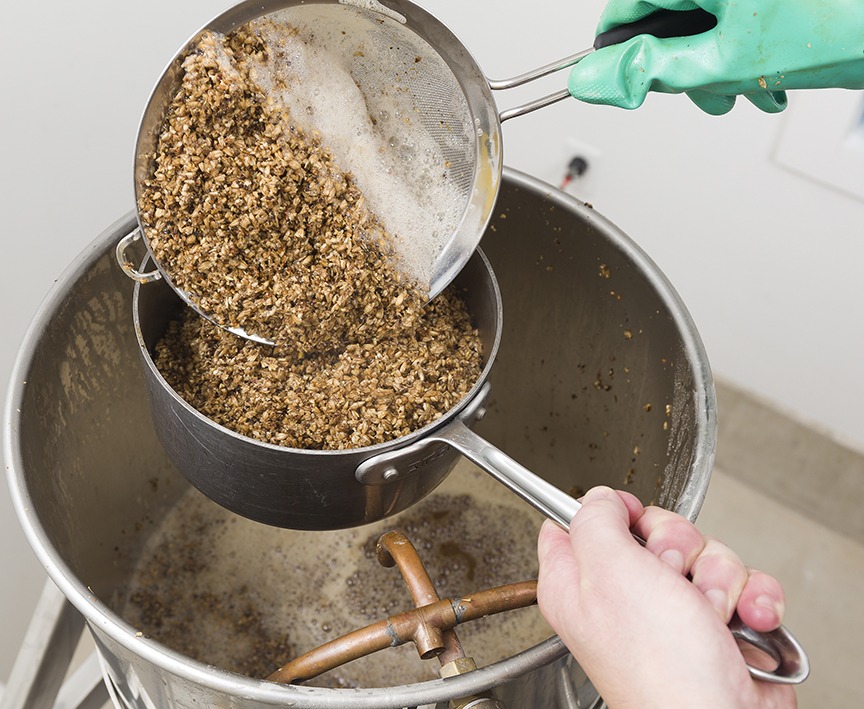
Since the rise of the sparge, it has been taken as fact that using water over 170° F (77° C) will extract harsh tannins from the grain, causing mouth-puckering astringency in your beer. No one wants that! This still frequently appears on forums and in books. But it seems to overlook one little brewing technique: The decoction mash.
Decoction mashing has been around for centuries and is still used by many award-winning homebrewers today. Decoction mashing is done by removing a portion of the mash and boiling it before returning it to the mash tun. The last time we checked, boiling temperature (212 °F/100 °C at sea level) is hotter than 170° F (77° C)! So, why does this technique make award-winning beer instead of a harsh, astringent mess? Because of pH.
The magic number appears to be a pH of 6 or above. If you keep your pH well below that (ideal mashing pH range is 5.1–5.6), the temperature of your sparge water really won’t matter. For the last 15 years Denny has been using sparge water in the 185–190° F (85–88° C) range and has no issues with tannin extraction. That’s because the pH of his mash stays
well below 6. Sometimes it just works out that way, sometimes he needs to add a bit of lactic acid to achieve a suitable pH. Whether that exact method works for you will depend on your water.
Another common myth lies on the other end of the temperature spectrum. There is a belief that you must sparge with hot water. Some homebrewers we’ve spoken with assume that hotter water loosens the sugar in the grain more, making it less viscous so it removes more sugar and increases efficiency. Unfortunately, physics doesn’t work like that. There’s a thing called the “limit of solubility,” which determines how much sugar can be dissolved in a liquid at a given temperature. While there are certain benefits to sparging with warm water (like runoff rate), it actually does little to help with extract efficiency.
Unless the specific gravity (SG) of your wort is over 1.300, there is minimal, if any, advantage for homebrewers to use hotter water to dissolve the sugars. Kai Troster has done experiments showing that even using cool (60° F/16° C) water to sparge will not adversely affect efficiency or beer quality.1 Ray Found of Brülosphy did an Exbeeriment that resulted in a minimal difference (at least in homebrewing terms) in original gravity and alcohol when sparging at cool vs. standard temperatures.2 Denny has also tested this repeatedly using room-temperature water with no apparent effect
on efficiency.
But let’s get real here. Aside from the curiosity of demonstrating that hot sparge water doesn’t matter, or as an emergency technique when for some reason you can’t heat the water, we don’t see a real advantage to using cool sparge water. You have to heat the wort to a boil anyway, and hotter water will get you there more quickly.
Hot-Side Aeration (HSA)
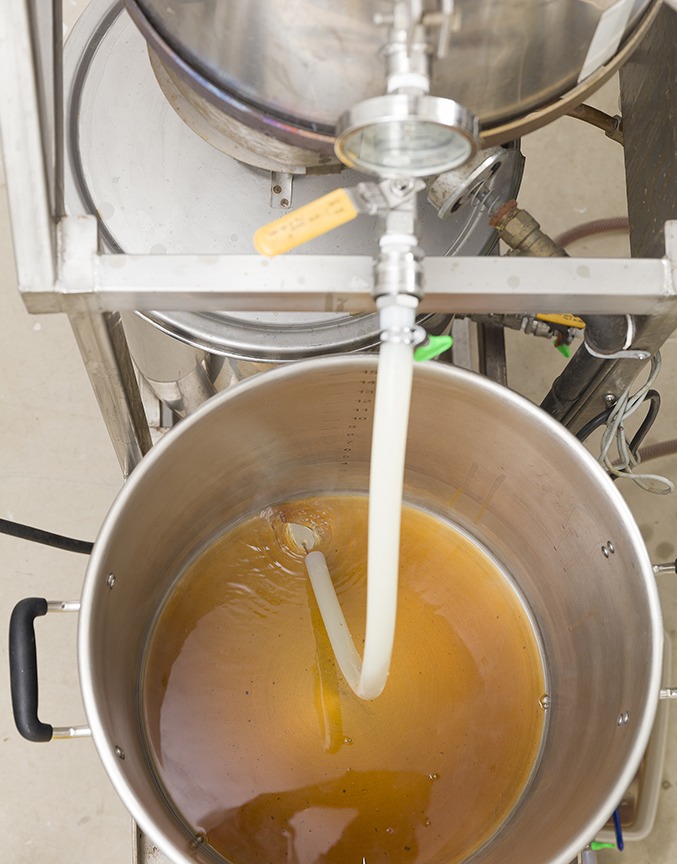
Three of the most controversial words in homebrewing! Hot-side aeration is one of those things that originated in the commercial brewing world (for good reason) and got passed on to homebrewers. Twenty years ago, we were taught to carefully avoid aerating wort when it was above 85 °F
(29 °C) to avoid accelerating oxidation and staling (i.e. wet cardboard, metallic, and, strangely, caramel flavors in your beer). The only time oxygen was supposedly not harmful was when the wort was chilled and ready for yeast. So homebrewers were careful to the point of paranoia. “Thou shall not splash the wort!”
But a funny thing happened — almost no one noticed an impact on their homebrew. Larger commercial brewers were, and still are, usually careful to avoid oxygen in the brewing process as much as possible, although there are notable exceptions. But at the homebrew level it just didn’t seem to make a noticeable impact on the resulting beers.
Luminaries like Dr. Charlie Bamforth said that HSA was not a problem. Eventually he and Randy Mosher, among others, reached the conclusion that it could be a problem, but at the homebrew level it was unlikely to rear its head and there were far more important things to worry about. A Brülosophy Exbeeriment found no difference between beers that had minimal hot-side oxygen exposure and ones that had been heavily aerated on purpose.3
So, what’s the takeaway here? Our point of view is that hot-side aeration is easy enough to avoid that you should try to not do it. That can be as simple as not pouring hot wort or using a piece of tubing when you collect mash runoff in the kettle. We all know that oxygen is the enemy of beer, so why not try to avoid it anywhere you can? But at the same time, don’t freak out about it.
Side note — the new hotness is LoDO (low dissolved oxygen) brewing — which picks up a number of techniques from large commercial, particularly German, brewers. Proponents of the technique point to improved malt character amongst other flavor impacts. While there’s nothing wrong about the techniques themselves, again at the homebrew level, we haven’t found an advantage to employing these tactics for our preferred beer styles. But, like all things homebrewing, if you feel the urge to try it, go right ahead.
Remember, homebrewers have one big advantage over commercial brewers — we can keep our beer cold for its lifetime. Warm storage of beer speeds up staling. If you can keep things cold, you’re gold.
Fly Sparging vs. Batch Sparging Efficiency

You will frequently hear people say that fly sparging yields better extraction efficiency than batch sparging. That’s true . . . in a perfect world! We don’t know about where you live, but this is not a perfect world we’re brewing in.
If you had a perfectly designed fly sparging system, and you executed your sparge perfectly, you may achieve greater extraction by fly sparging. But those ifs are the problem. In reality, batch sparging will yield at least as high, if not higher, efficiency than fly sparging. When you batch sparge, variables like lauter tun design and sparge technique are removed from the process. In the real world, efficiency in excess of 80 to 85 percent is possible with batch sparging — pretty much the same as fly sparging. The decision of which to use should be based on your preferences and equipment choices, not efficiency concerns.
Commercial breweries and equipment manufacturers spend tons of time creating well-balanced and understood systems and even they get it wonky!
And besides, haven’t we seen people go even farther these days? After all, what is brew-in-a-bag (BIAB) except a very flexible limited batch/no sparge setup? (See also all the new “all-in-one” electric homebrewing systems like Grainfather, Brewzilla, Foundry, and all of the other fun, shiny pieces of equipment that were featured in the October 2021 issue of BYO.) Of all the practices adapted from commercial brewing, we think fly sparging, while fun, adds needless complication on our scale.
Olive Oil In Place of Aeration
Homebrewers love a good shortcut and if it’s cheaper, that’s a bonus! In 2008, Grady Hull, the Assistant Brewmaster at New Belgium Brewing at the time, published a peer-reviewed paper titled “Olive Oil Addition to Yeast as an Alternative to Wort Aeration”.4 In a nutshell, the idea is that yeast cells use oxygen to synthesize ergosterols, which keep cell walls flexible and ease the budding process for yeast cell growth. The thinking with olive oil is that you “cut out the middleman.” You add the oil, which the yeast cells can uptake to do the same thing and avoid the potential damage (for New Belgium) and expense (for homebrewers) of oxygen.
Homebrewers being homebrewers, they jumped on this technique as an easy, inexpensive alternative to aerating wort. Unfortunately, most missed what Grady was really doing: He was adding the oil to yeast in a yeast brink prior to pitching, not propagation in the fermenter. They also didn’t account for the infinitesimally small amount of olive oil needed (the average dose was about 20 mg/L yeast). Most homebrewers who tried it reported things like “well, it didn’t hurt.” Neither does doing the Chicken Dance around your wort!
At Experimental Brewing, we decided to test the effectiveness of using olive oil in place of aeration (as this is what many homebrewers gobbed onto when the paper hit blogs and homebrew chat spaces). For our experiment, four different brewers each split a batch of beer using olive oil “aeration” on one half and doing no aeration at all on the other half. The idea was to see the most dramatic difference possible. If olive oil “aeration” worked, we should see a marked difference between that and doing absolutely no aeration at all. The four brewers arranged blind triangle tastings with a total of 47 tasters. The results? Most tasters found no difference whatsoever in beer flavor. The brewers reported no differences in fermentation performance. The takeaway was that using olive oil for aeration was equivalent to doing no aeration at all. You can see the results for yourself at www.experimentalbrew.com/experiments/olive-oil-vs-no-aeration.
Take our advice: Save your olive oil for salads!
To dig deeper, this makes sense — Grady had the yeast cells in long-term agitated contact with the oil addition in non-fermentation conditions. The yeast had plenty of time to uptake the sterols. In a batch of wort, the cells have barely any time to absorb the oil before fermentation kicks off. Oxygen, on the other hand, can be quickly assimilated by yeast.
Fermentation Temperature
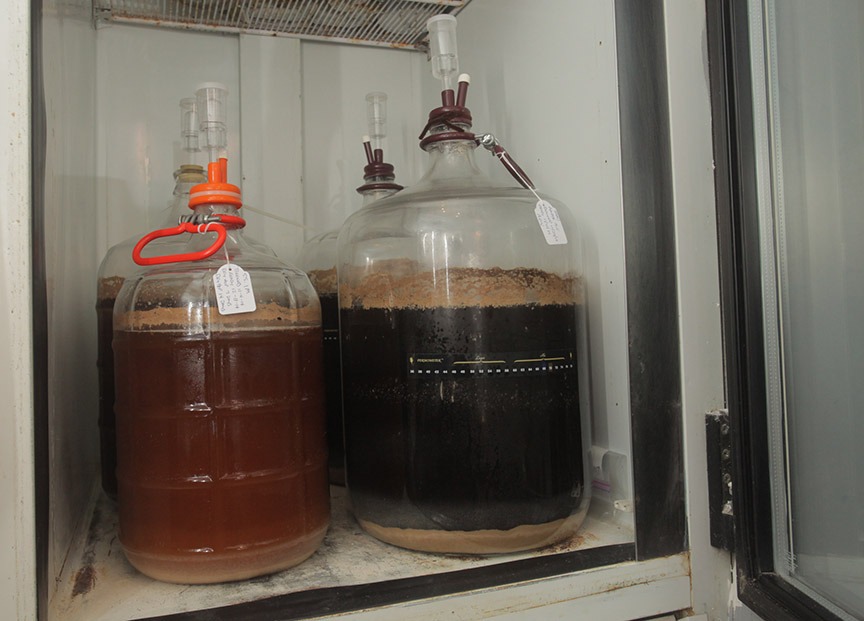
When you buy a package of yeast or look at a yeast company’s website, you see a list of recommended temperature ranges for each yeast strain. What a lot of homebrewers don’t realize is that those are only broad recommended guidelines, not hard-and-fast rules (and when we say broad, we mean broad). Manufacturers often recommend temperatures higher than those that experienced homebrewers prefer in an attempt to help newer brewers prevent bacterial contamination by ensuring rapid yeast growth.
Yeast fermentation temperature has a large impact on beer flavor. The warmer you ferment, generally, the more impact it has. Esters (aka fruity tones) tend to increase at warmer temperatures. If you get too warm, the dreaded fusel alcohols can become a problem.
Many experienced homebrewers prefer to begin fermentation at temperatures lower than manufacturer recommendations. (For instance, Drew almost always starts his ales, including saisons, at 63 °F (17 °C) for 1–2 days.) Most esters and fusels are formed during the first 72 to 96 hours of fermentation. After that, you can safely raise the temperature to make the yeast more active and ensure complete fermentation.
Another myth floating around is to always start fermentation of Belgian styles at higher than normal temperatures. While some Belgian breweries do that, it is far more common for them to follow the fermentation schedule previously described; starting cool and finishing warmer.
Our general recommendation would be to start your fermentation at, or a bit below, the lowest temperature recommended for the yeast. The exothermic reaction from fermentation will raise the temperature a bit, and after three or four days you can safely let the fermentation temperature rise. If you find you’re not getting enough yeast character like that, then start a bit warmer the next time. Part of this comes down to what flavors you want the yeast to contribute to your finished beer.
Along the same lines, the conventional wisdom is that lagers take a long time, sometimes months, at a low fermentation temperature. But there’s an old lager fermentation method, also used by commercial brewers, that has begun making itself known in the homebrew world —fast lagers. Using this method, you can have a lager in your glass in as little as two weeks after brewing it. Mike “Tasty” McDole was one of the first homebrewers to rediscover this method and begin talking about it. Since then, many of us have started using this method. The basic idea is to start your fermentation at 55 °F (13 °C). When the gravity drops 50 percent of the way to its expected terminal value, raise the temperature to 58 °F (14 °C). When it gets 75% of the way there, raise the temperature to 62 °F (17 °C). And then when it reaches 90%, raise to 66 °F (19 °C) and hold until the beer reaches your expected final gravity. You can have your delicious lager in two weeks rather than two months!
Denny wrote in more detail about this technique in a January-February 2017 BYO story (available to digital members at https://byo.com/article/fast-lagers/), and we also went into more depth in our book Homebrew All-Stars (shameless plug).
Liquid vs. Dry Yeast

This is another thing that has changed a lot over the last 20 years, but for some reason the old saw persists that liquid yeast is always better than dry yeast. The “always” in there should be a red flag! Years back, production techniques for dry yeasts were less sophisticated than they are today, and packets might have been lifeless or contaminated by the time homebrewers purchased and used them. These days, we’re happy to say things are much better, and there are some great dry yeasts out there. You can make your selection based on flavor, performance, and your preferred methods rather than simply whether the yeast is dry or liquid. In addition to the quality, dry yeasts will also save you money and they have the added benefit of better viability and shelf life compared to liquid strains — meaning you should always keep some on hand for when you need yeast in a pinch.
A couple of our favorite lager yeasts are dry (Fermentis SafLager W-34/70 and S-189). Our recommendation: Try a few dry strains and see what you think of them before coming to a judgment based on outdated information. We think you’ll be pleasantly surprised.
So, there you have it: Our partial list of “homebrew myths.” There are certainly more, and you may have run across a few yourself. But the most important thing to remember, as always, is to try things for yourself and make up your own mind.
References:
1 http://braukaiser.com/blog/blog/2009/05/12/cold-water-sparging/
2 https://brulosophy.com/2016/04/11/sparge-temperature-pt-1-standard-vs-cool-exbeeriment-results/
3 https://brulosophy.com/2014/11/18/is-hot-side-aeration-fact-or-fiction-exbeeriment-results/
4 Hull, Grady. “Olive Oil Addition to Yeast as an Alternative to Wort Aeration.” MBAA TQ vol. 45, no. 1 • 2008 • pp. 17–23;
